No matter what art form you are working in, the basis of any good design comes down to the organization of its elements. This is done according to certain guidelines, which are referred to as the principles and elements of design. All professional designers use these concepts, even if they are unaware of them.
Fashion specifically refers to current clothing, hairstyles, and footwear trends. The process of creating new styles is called fashion design. An effective design can be recognized by the various elements of design that have been used skillfully and combined in a certain style.
Principles of design are guidelines that help you use design elements effectively. They are applied when you want to create an attractive design. For example, they can be used when designing a piece of clothing. To be a successful designer, it is essential to have a good understanding of the basic principles of design.
Basic ingredients or elements of design
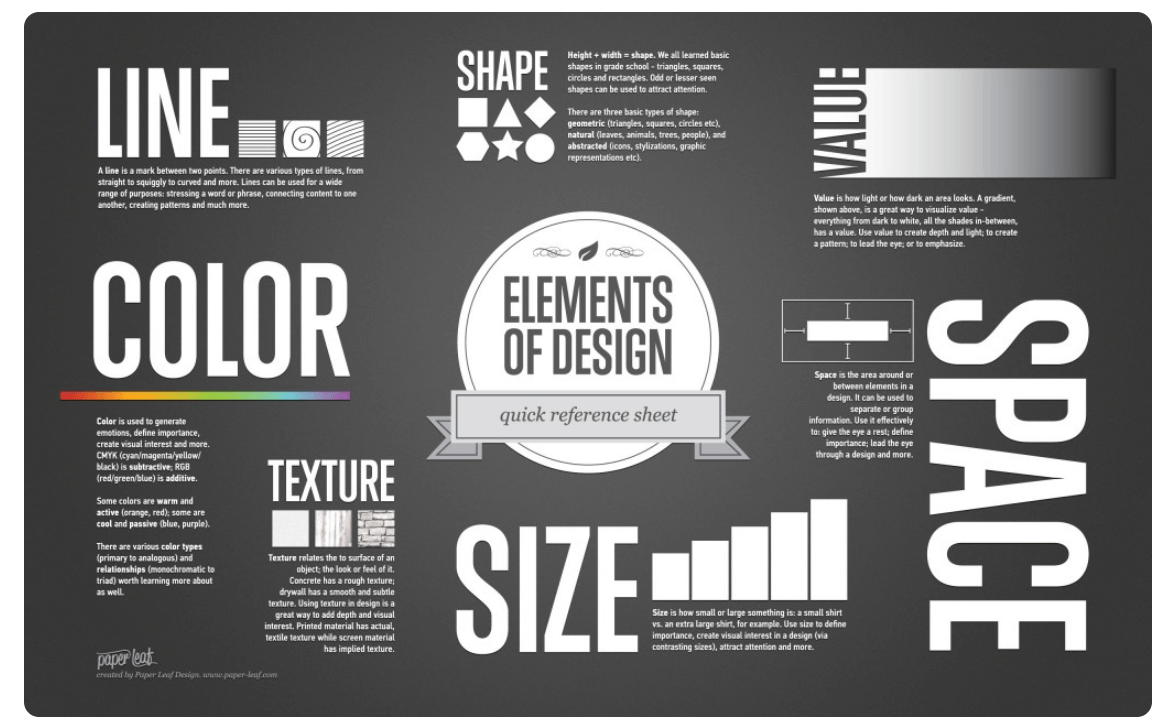
To create a successful garment, one must consider the basic design elements, including silhouette, line, colour and texture. By understanding how these key ingredients work together, a fashion designer can produce stylish and practical garments. Let’s take a deeper look at each element.
Shape or Silhouette
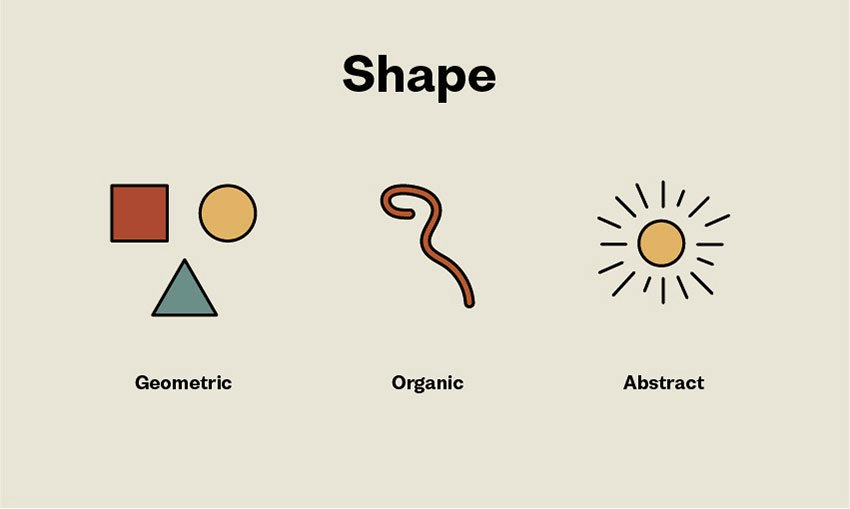
All garments have an overall shape or silhouette. It’s the most basic and important visual element of any clothing item. The silhouette is what first catches somebody’s eye from a distance; it’s responsible for initial impressions. Over time, silhouettes tend to repeat and recycle themselves in cycles throughout history. One author explained that the silhouette encloses all other design lines in an outfit. Another source stated that, as fashion trends develop, different fashion silhouettes evolve to flatter or exaggerate different parts of the body. Consequently, the silhouette is a crucial foundation for any successful garment design.
Line

As one of the design elements, a line is a simplest and most important element. All lines have length and width. There are mainly two types of lines used in designing clothing styles: straight and curved lines.
A straight line can be oriented vertically, horizontally, or diagonally. Lines, according to Vanderhoff, have a direction, breadth, and length. The movement of an observer’s eye around and across a picture might be vertical, horizontal, diagonal, or curved (Nateman, 1994). It is critical to realize that lines produce pictures or illusions. A garment’s design line directs the viewer’s gaze in a specific direction. These lines may be effectively employed to improve body proportions and contours.
The line of a garment can help create the illusion of a slimmer waist, hips or shoulder line. Wearing a garment with diagonal lines can also make someone look taller and thinner. On the other hand, horizontal lines tend to make a person look wider and shorter.
In short, an artist or designer should be able to use lines in various ways to create certain illusions or images to improve the overall look of the garment. Different types of lines can be used to achieve different results regarding clothing design.
Texture
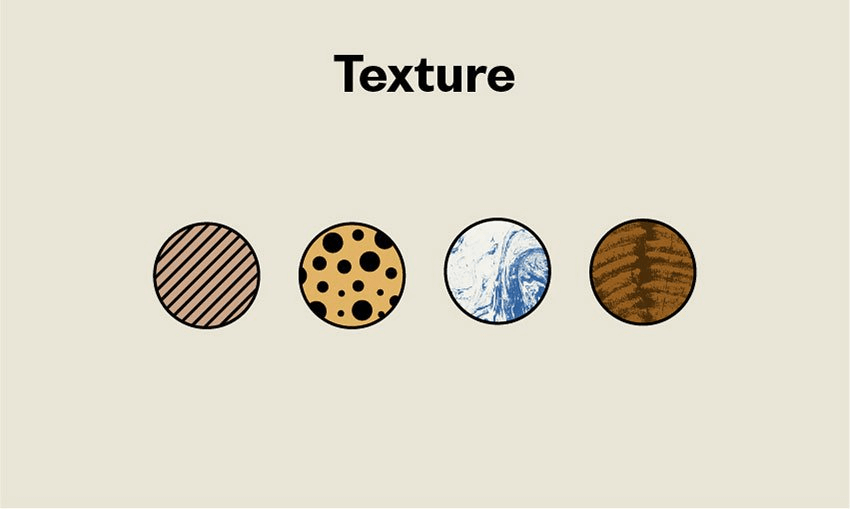
In design, texture refers to the surface quality of a material, which can be either real or simulated. The perceived quality of a material is determined by its structure and the way it reflects light. Texture can significantly impact the overall look and feel of a garment.
Different fabrics will have different textures, depending on the raw material used and the type of weave. The texture of a fabric can be described as soft, rough, shiny, dull, bulky, filmy, transparent, thick or smooth. The way a fabric hangs on the figure (drape) is also influenced by the stiffness or softness of the fabric and its weight.
The design of a garment can be affected by the texture of the fabric. For example, a very smooth and shiny fabric will reflect more light than soft or rough fabric, making it more suitable for evening wear. A heavy, bulky fabric will add bulk to the figure and make a slim person look broader.
Texture can also create illusions about the figure of the wearer. For example, a shiny fabric such as satin may make a person look larger than they actually are. On the other hand, a matte fabric such as woollen may have the opposite effect.
Thus, when selecting a fabric for a garment, it is important to consider the overall effect the texture will have on the design.
Colour in fashion designing
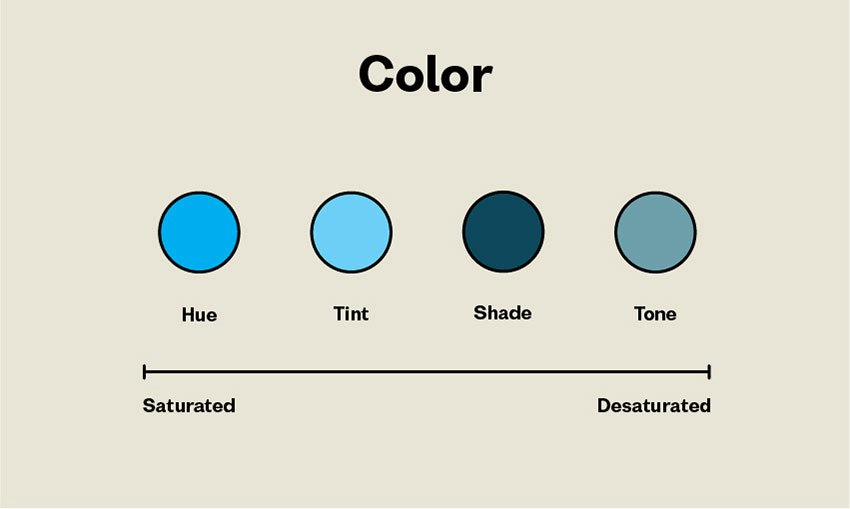
Picking the right colours is important for fashion designers because it creates the most visual impact and can influence people’s emotions. Warm colours like red, orange and purple are stimulating and exciting, while cool colours like blue, green, and white suggest calmness. Black and grey can have a depressing effect. There are no fixed rules about what colours are flattering, as personal preferences for certain colours vary from person to person. Ultimately, fashion designers should be aware of how different colours can affect a garment’s overall look and feel.
Principles of design
To create a successful garment, it is important to understand design principles. These principles include unity, balance, rhythm, repetition, emphasis, proportion and scale. By applying these principles, you can create a design that is aesthetically pleasing and meets clothing goals, such as comfort and flattery.
- Balance
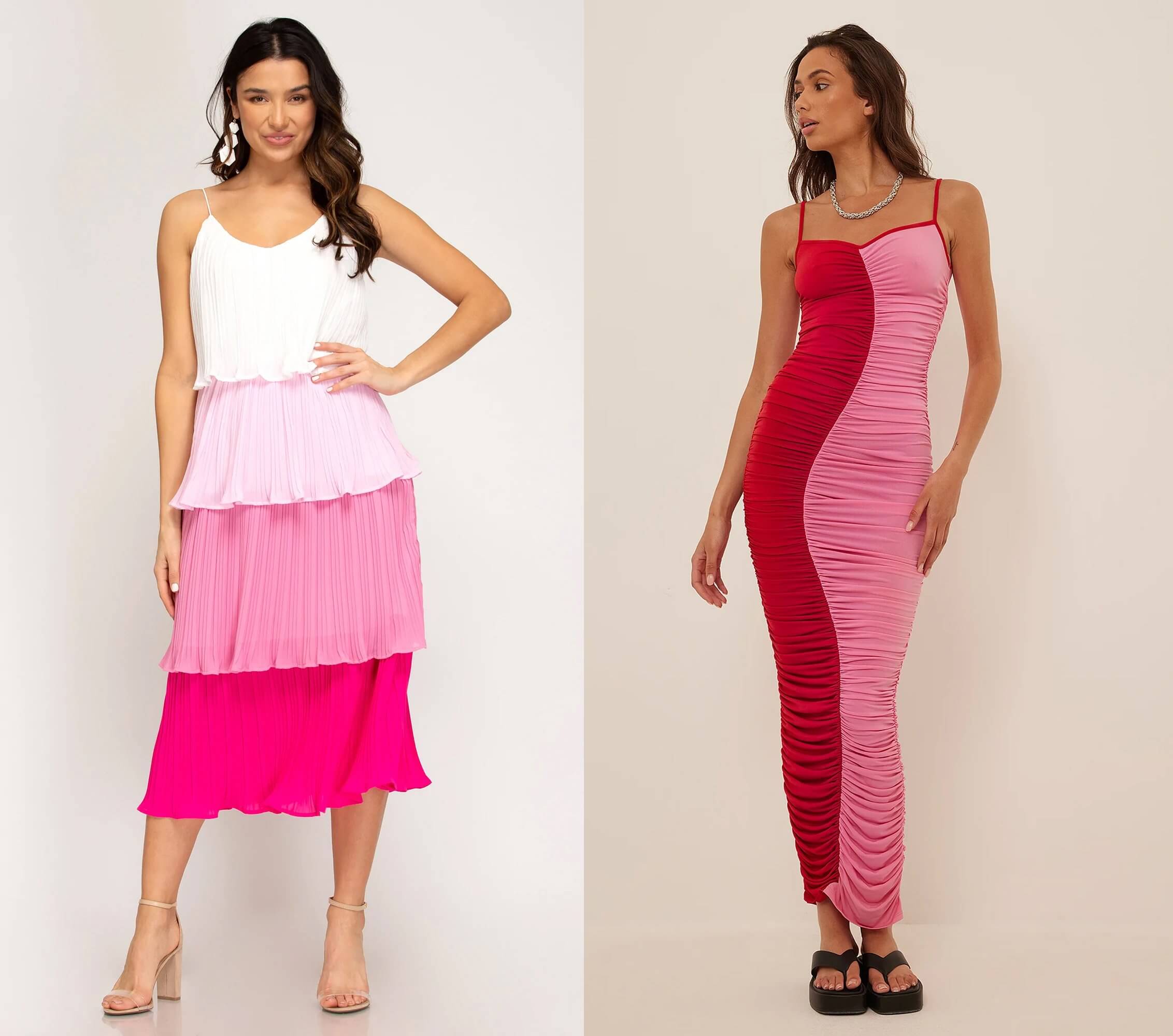
Formal balance, also known as symmetrical or equal balance, is a type of balance in which designs look the same on both sides of a garment. This symmetry creates a feeling of stability in the design. Formal balance can be achieved by arranging various design elements, such as colour, texture, line, and motif, evenly distributed. For example, a design may have large areas of tint balanced by small areas of bright colour or shades. Another way to achieve formal balance is to mirror the design on either side of the centre.
In contrast, informal or asymmetrical balance means that the two sides of the design are not exactly alike but are still equally interesting or important. This type of balance often results in a more exciting or dramatic effect. An example of an asymmetrical design is a one-shouldered dress or a dress with a slanted hem.
Another design guideline is emphasis, which refers to a feature that sticks out or is made more apparent than the rest. Anything with emphasis is something that dominates or becomes the center of attention. A design highlight is a focus on that design. It is the focal point of attention since it dominates the rest of the design. Contrasting texture, color, lines, and dots can be used to generate emphasis, as can employing an odd shape stitched into the garment in the form of appliqué or fringes.
- Rhythm
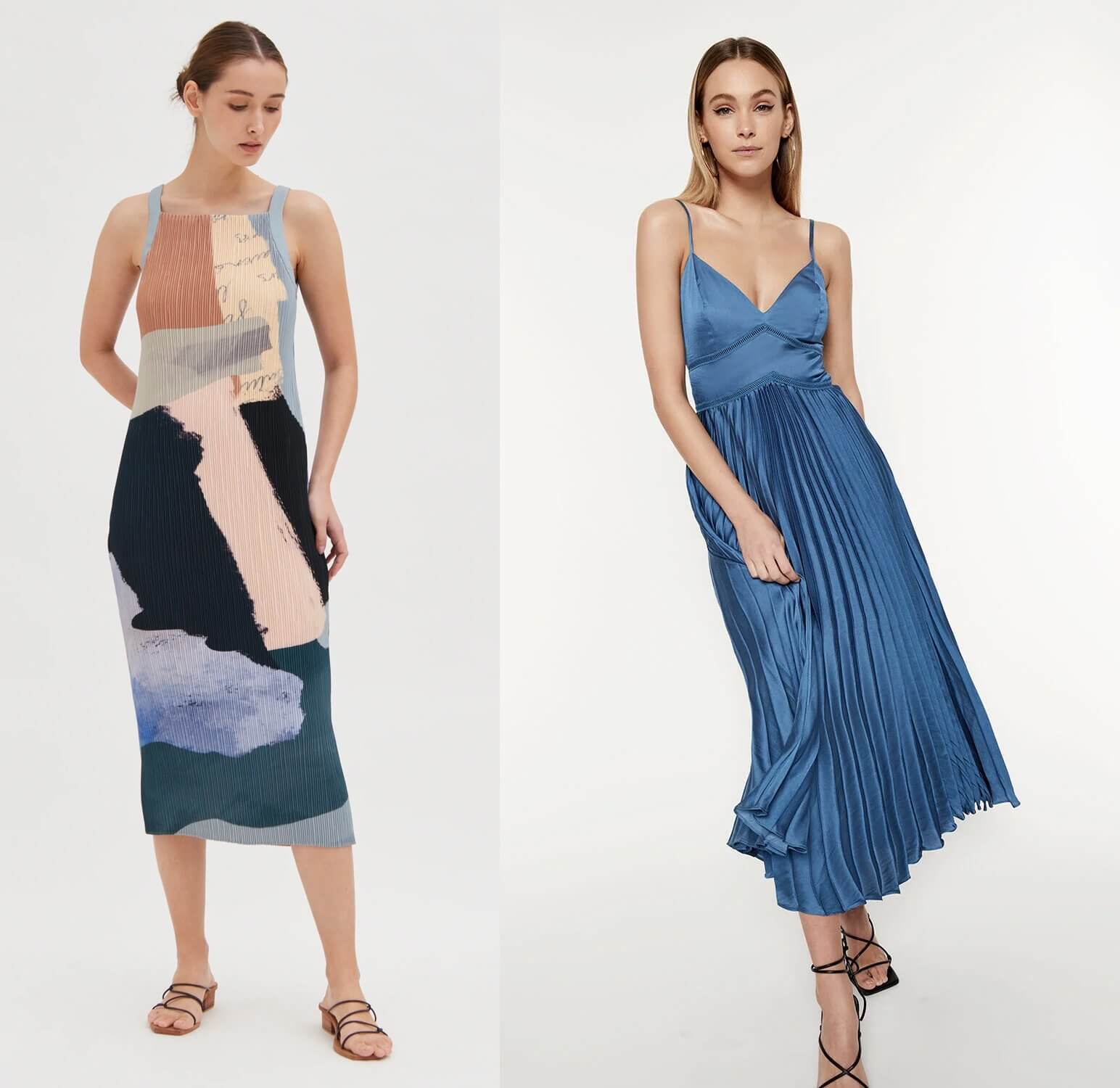
Possessing a well-designed garment entails more than just an aesthetically pleasing appearance. Basic design principles play a fundamental role in the overall success of a piece of clothing. One key element to consider is rhythm, which can be created through various means such as line, colour and texture arrangement. When done effectively, it results in an visually appealing pattern that holds the design together.
Another way to achieve rhythm is through repetition, whether it be of curves, texture, lines or hues. This method can produce an aesthetically pleasing effect that draws the eye naturally from one part of the garment to another. Radiation is another means of creating rhythm, which occurs when lines flow outward from a central point of interest. This can be seen in dresses where gathering at the centre front creates movement and interest.
Gradation is another means of achieving rhythm, which refers to increasing or decreasing the size of elements as they are repeated. This can be done with shapes, lines or colours and can be used to create a captivating look in a garment. Ultimately, understanding and utilising these various design principles will result in a more successful and impactful piece of clothing.
- Unity
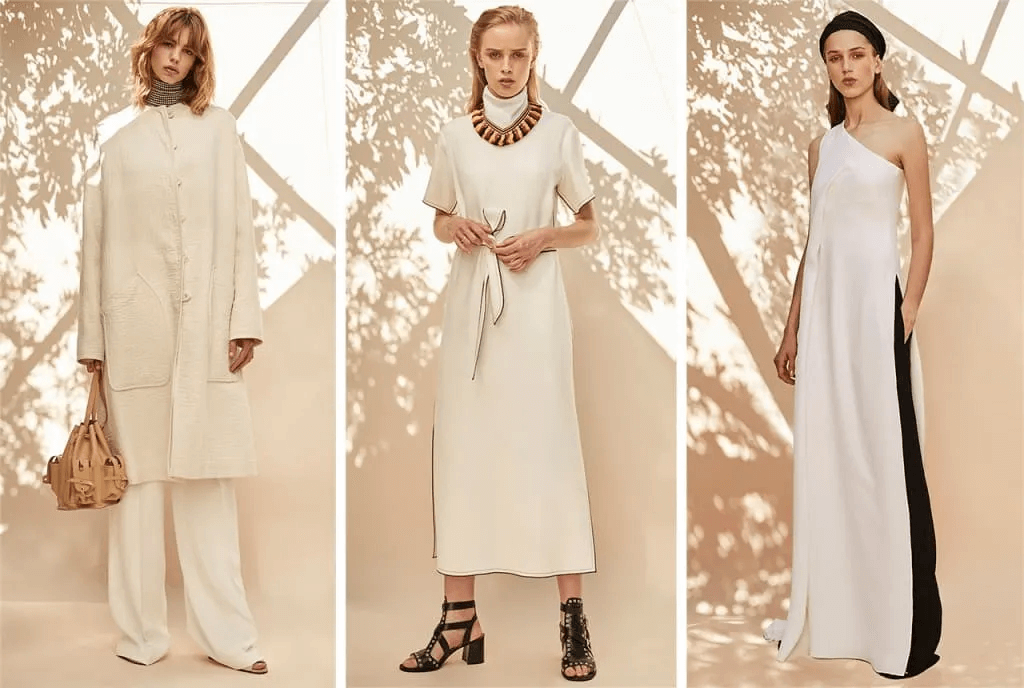
A design is unified when all the design elements work together to produce a pleasing effect. This can be seen in the above image, where curved lines are used for the jacket’s neckline, pocket tabs and hem. When lines are appropriately harmonized, the design seems finished.
CONCLUSION
You can use basic design principles to create flattering garments for different figure types. If you understand how to use the elements and principles of design, you can make any garment look great on anybody. However, many dressmakers lack this formal education and instead rely on their own experiences. This study recommends that dressmakers attend workshops and seminars to learn more about basic design principles and how to apply them. This knowledge will help dressmakers select fabrics and patterns that work well together and choose flattering styles for different figure types.
